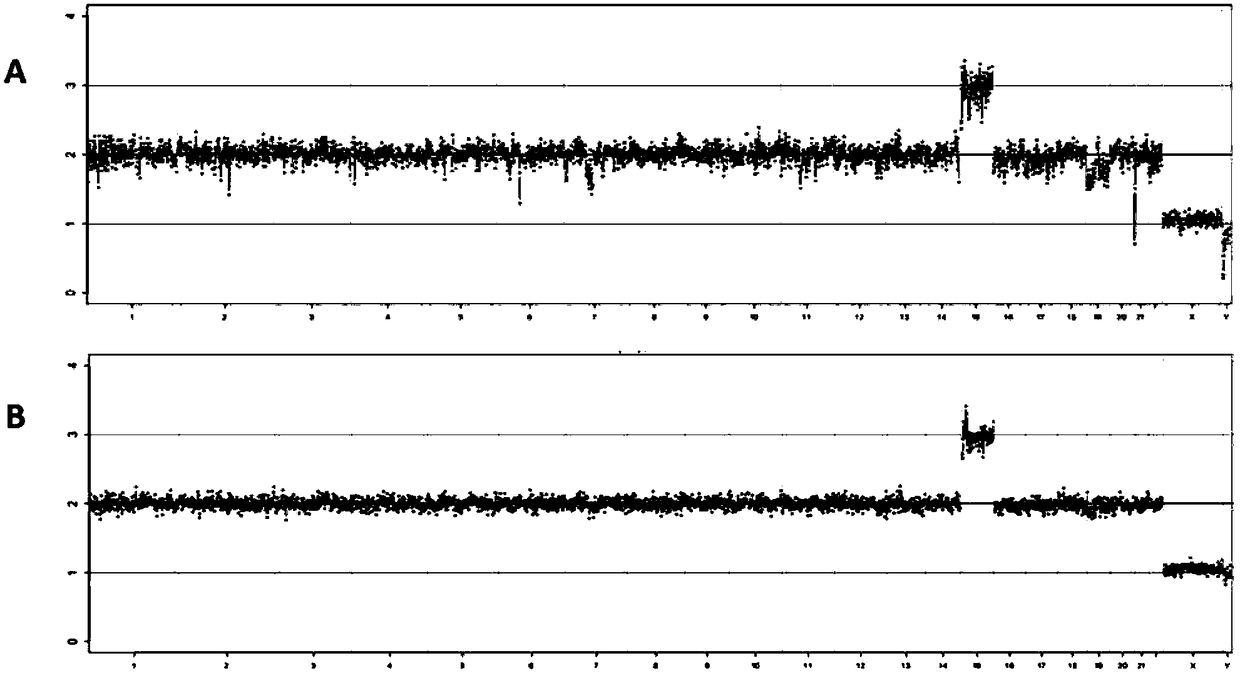Chromosome abnormality detection device
A chromosomal abnormality and detection device technology, applied in the field of chromosomal abnormality detection devices, can solve the problems of failure of test-tube babies, ineffective removal, unexplained spontaneous abortion, etc., and achieves the effects of improving uniformity and reducing data noise
- Summary
- Abstract
- Description
- Claims
- Application Information
AI Technical Summary
Problems solved by technology
Method used
Image
Examples
Embodiment 1
[0060] Applying a chromosomal abnormality detection device provided by the present invention to the chromosomal abnormality detection technology based on single cell amplification specifically includes the following processing steps, and the flow chart is as follows: figure 1 shown.
[0061] 1. Obtain whole genome sequencing data
[0062] A batch of cell lines with known karyotypes were purchased from Coriell Company. A total of 25 samples participated in this test, and the sample numbers were T1-T25, including: 2 negative samples; 3 samples of sex chromosome aneuploidy; 7 samples Autosomal aneuploidy sample; 1 sample of sex chromosome microduplication or microdeletion; 12 samples of autosomal microduplication or microdeletion; the above samples were subjected to single-cell whole-genome amplification, library construction and high-throughput sequencing to obtain Read long fragments.
[0063] 2. Compare
[0064] Compare the obtained read length fragments with the human geno...
PUM
 Login to View More
Login to View More Abstract
Description
Claims
Application Information
 Login to View More
Login to View More - R&D
- Intellectual Property
- Life Sciences
- Materials
- Tech Scout
- Unparalleled Data Quality
- Higher Quality Content
- 60% Fewer Hallucinations
Browse by: Latest US Patents, China's latest patents, Technical Efficacy Thesaurus, Application Domain, Technology Topic, Popular Technical Reports.
© 2025 PatSnap. All rights reserved.Legal|Privacy policy|Modern Slavery Act Transparency Statement|Sitemap|About US| Contact US: help@patsnap.com



